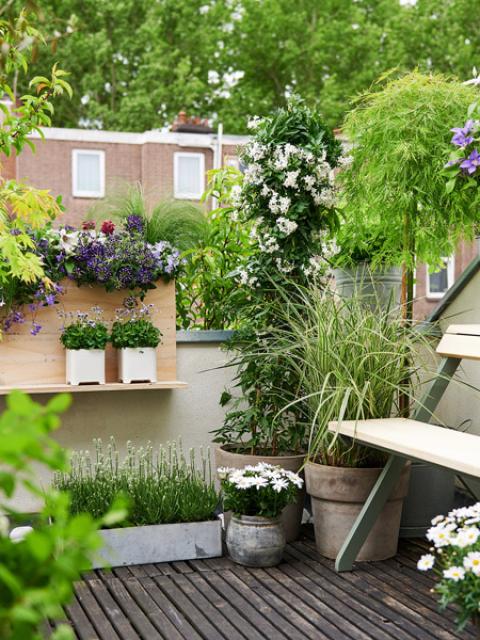How to make a mobile planter
There's two methods to making a mobile planter. One way is to nail together a wooden container, screw wheels onto the bottom, line it with a waterproof liner and paint it up. It's a fun project for someone who is handy with tools, and has time on their hands, but we admit it's not for everyone.
We suggest you find yourself a wooden board with castors underneath, also known as a dolly — it's something you can easily source online. Measure it up, and place a sturdy pot on top, making sure it's big enough to conceal the board. Once it's filled up with soil and plants, the container will be too heavy to lift, so make sure it's in position on the board and outside, before you start planting.
Think companion planting
When we made our own version, we took a companion planting approach to our plant choices. It means we placed plants together that help one another: one plant will repel the fungi that another plant is prone to, and another will encourage pollination. For example, marigolds and roses make extremely happy bedfellows: the former has substances in their roots that repel the nematodes that like to munch on the roots of the latter.
Go high and low
Alternate low plants with climbers in order to give the planter a natural sculptural aesthetic. Use bushy plants to provide a green backdrop to colour. If in doubt, opt for different shades of the same colour palette, which always work well together. In this case we opted for whites, lilacs and purples, with alstroemeria, passionflower, rock cress, lavender, clematis, meadowsweet, verbena and False African violet. With several flowering mobile planters set up, you can switch plants around depending on your mood, and create a new aesthetic whenever you feel like it.








